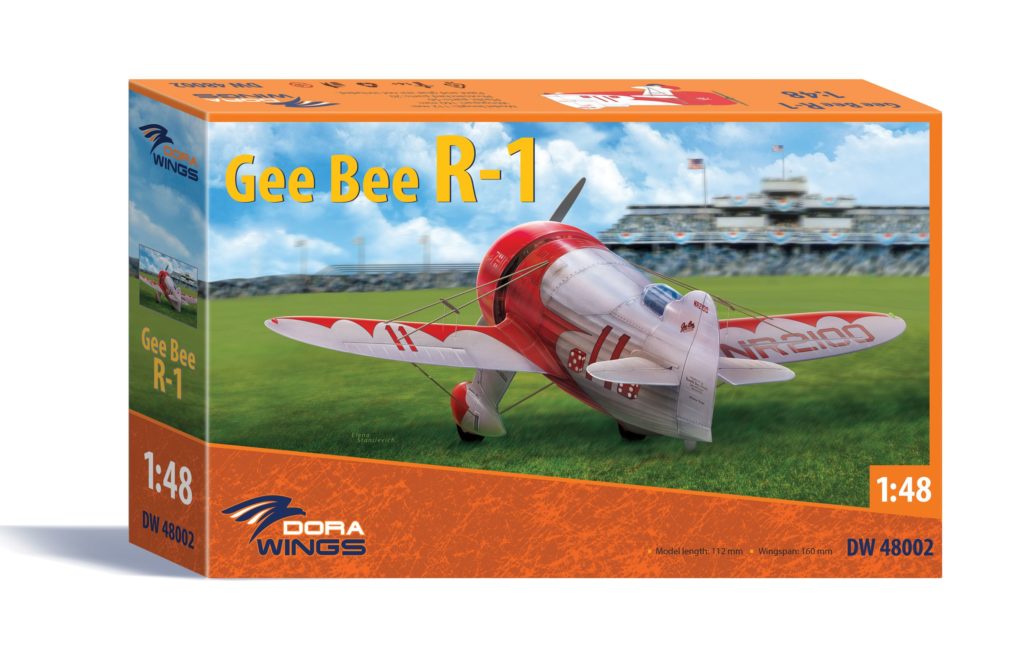
DW 14402 GeeBee Model Kit
Das Werk DW 14402 GeeBee Model Kit
he R-1 rapidly earned a reputation as a potentially very dangerous machine. The small wings, very low polar moment of inertia, and tiny control surfaces made for an aircraft that could rapidly get away from all but the most skilled pilots. This shortcoming was common to most air racers of the day.
During the 1933 Bendix Trophy race, racing pilot Russell Boardman was killed, flying Number 11. After taking off from a refuelling stop in Indianapolis, Indiana, the R-1 stalled, and crashed.
Note that the R-2 originally used a 550 hp Pratt & Whitney R-985 Wasp Junior nine-cylinder radial powerplant, as the aircraft was designed primarily as a cross-country racer with increased tankage that did not require the larger 800 hp Wasp. In 1933, the R-2 was modified or closed-circuit racing and was fitted with the more powerful engine and cowling of the R-1 version. Other modifications included a larger wing, equipped with flaps.
DW 144-02 GeeBee
The R-1 rapidly earned a reputation as a potentially very dangerous machine. The small wings, very low polar moment of inertia, and tiny control surfaces made for an aircraft that could rapidly get away from all but the most skilled pilots. This shortcoming was common to most air racers of the day.
During the 1933 Bendix Trophy race, racing pilot Russell Boardman was killed, flying Number 11. After taking off from a refuelling stop in Indianapolis, Indiana, the R-1 stalled, and crashed.
Note that the R-2 originally used a 550 hp Pratt & Whitney R-985 Wasp Junior nine-cylinder radial powerplant, as the aircraft was designed primarily as a cross-country racer with increased tankage that did not require the larger 800 hp Wasp. In 1933, the R-2 was modified or closed-circuit racing and was fitted with the more powerful engine and cowling of the R-1 version. Other modifications included a larger wing, equipped with flaps.

